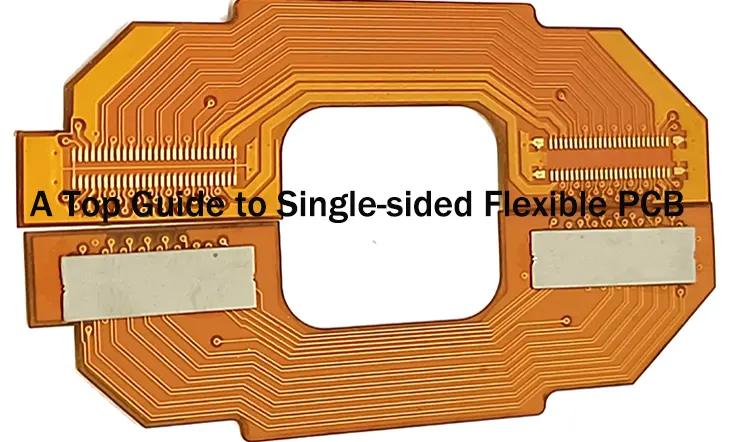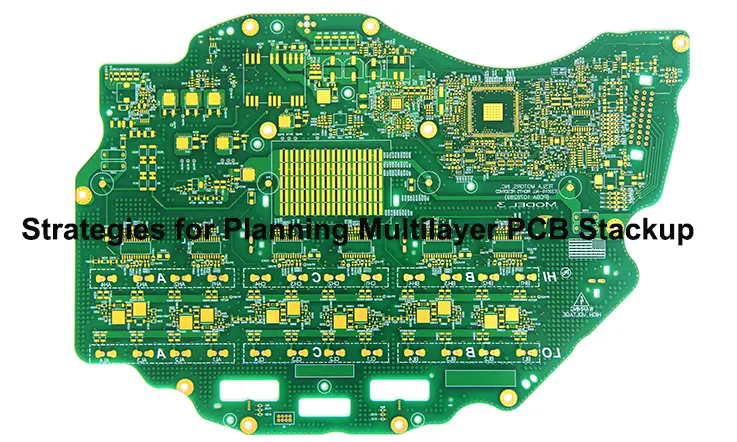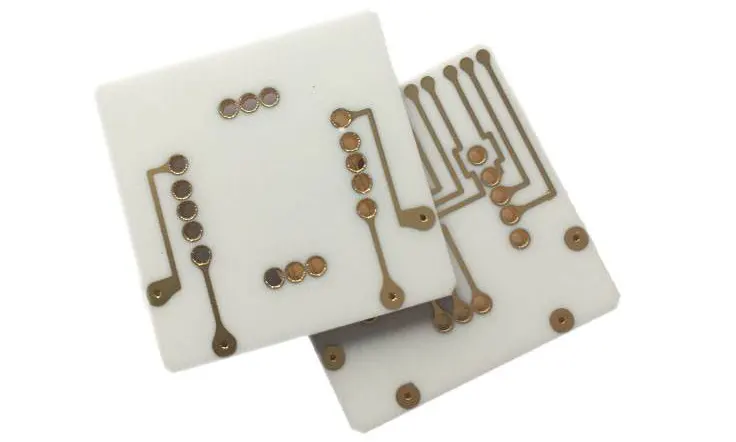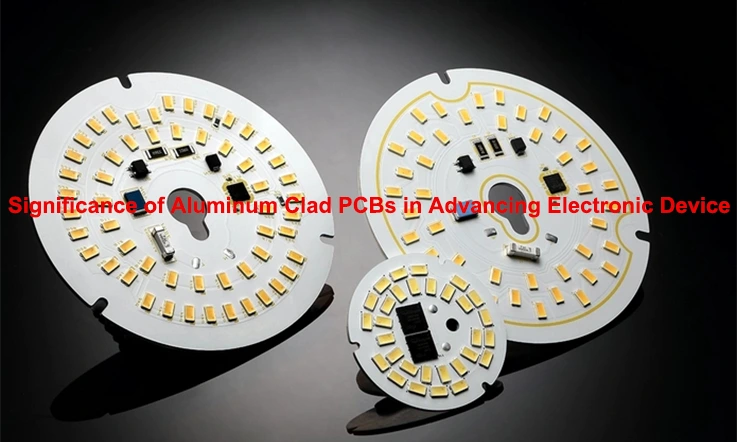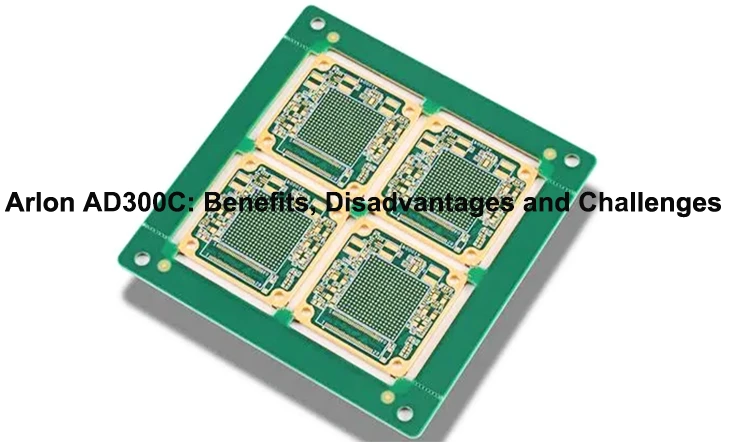
In the world of high-frequency electronics, selecting the right materials for PCB (Printed Circuit Board) design is an essential decision that impacts performance, efficiency, and longevity. For engineers working on RF (Radio Frequency) and microwave circuit boards, the choice of laminate material can mean the difference between a reliable, long-lasting circuit and one that experiences signal degradation and performance issues. Among the various materials available, Arlon AD300C PCB Laminates have consistently stood out as an excellent choice for these high-performance applications.
This article dives deep into Arlon AD300C PCB Laminates, explaining why they are a favorite among RF engineers, microwave circuit designers, and high-frequency device manufacturers. We will explore the material’s properties, its benefits, and best practices for designing with it.
Introduction to Arlon AD300C PCB Laminates
Essential for High-Frequency Circuit Design
When designing high-frequency circuits, especially for RF or microwave applications, selecting the right PCB laminate is a decision you can’t afford to overlook. Arlon AD300C PCB Laminates have earned a solid reputation, particularly in fields like telecommunications, military, and aerospace, where both performance and durability are non-negotiable. These industries demand materials that can withstand challenging environments, and Arlon AD300C delivers exactly that, proving to be a reliable choice time and again.
To ensure optimal signal integrity, low-loss transmission, and stable impedance, selecting the right PCB laminate is necessary. Arlon AD300C fits the bill perfectly, offering the necessary qualities to ensure your designs perform at their peak when faced with high-frequency demands. In the next sections, we’ll dive into the specific properties that make Arlon AD300C an ideal fit for RF and microwave applications, so you can see exactly why this laminate is up to the challenge.
Why Arlon AD300C PCB Laminates Are Ideal for RF and Microwave Applications?
Arlon AD300C PCB laminates are the go-to material for designing RF and microwave circuits, thanks to their excellent combination of electrical and mechanical properties. These laminates are crafted to meet the demands of high-performance signal transmission systems, providing low loss and a high dielectric constant, which help preserve the clarity and reliability of high-frequency signals.
As 5G technology and advanced wireless networks become increasingly prevalent, Arlon AD300C offers the performance stability required to support these high-demand systems. For RF applications, ensuring signal quality is non-negotiable, and this laminate delivers by maintaining signal consistency even at higher frequencies. With its low loss tangent, it minimizes signal attenuation, allowing us to push the limits of system performance without compromising signal clarity.
Additionally, the thermo-mechanical properties of Arlon AD300C make it particularly suitable for high-speed communications, where thermal stability and minimal expansion are needed to maintain consistent signal transmission over time.
| Property | Value |
| Loss Tangent at 10 GHz | 0.0020 |
| Dielectric Constant | 2.97 |
| Thermal Stability | Excellent |
This combination of low loss and high thermal stability makes Arlon AD300C a natural choice for applications like 5G communications, satellite systems, and high-speed radar. Therefore, if you’re designing a military communication system or an RF antenna, this laminate’s ability to handle high-frequency signals without signal degradation is a major benefit.
Key Properties of Arlon AD300C That Enhance RF Performance
To fully understand the benefits of Arlon AD300C, it’s essential to explore the specific features that enhance its performance in high-frequency applications. These characteristics influence everything from signal integrity and power efficiency to the reliability of RF and microwave circuits. In high-performance designs, attention to these details ensures consistent and stable results.
Low Loss Tangent: Minimizing Signal Degradation-
The loss tangent of a material shows how much energy is lost as heat rather than being carried as a signal. For high-frequency applications like microwave circuits, a low loss tangent helps minimize signal loss, ensuring that the signal remains strong and clear over longer distances, with less risk of degradation.
Arlon AD300C features an exceptionally low loss tangent, especially at microwave frequencies, ensuring minimal signal attenuation and high efficiency in data transmission.
| Frequency (GHz) | Loss Tangent (Arlon AD300C) |
| 0.5 GHz | 0.0024 |
| 5 GHz | 0.0021 |
| 10 GHz | 0.0020 |
Arlon AD300C consistently offers lower loss tangent values across a range of frequencies, making it the superior choice for applications that demand high performance at microwave frequencies.
Stable Dielectric Constant: Maintaining Impedance Control-
Impedance control is essential in high-frequency designs to prevent signal reflections, which can lead to data loss or interference. A stable dielectric constant helps maintain the impedance consistency of the PCB, allowing the signal to flow smoothly and efficiently from one point to another.
The dielectric constant of Arlon AD300C remains stable across a wide range of frequencies, making it perfect for RF circuit designs that need to maintain low-loss transmission in demanding applications.
| Frequency (GHz) | Dielectric Constant (Arlon AD300C) |
| 10 GHz | 2.97 |
Arlon AD300C maintains a consistent dielectric constant across various frequencies, ensuring the impedance stability necessary for reliable signal transmission in high-frequency applications.
Thermal Stability: Withstanding High-Temperature Environments-
Thermal stability is another property of Arlon AD300C. In high-frequency circuits, heat generation is inevitable, and materials with poor thermal stability can experience degradation, which affects performance and reliability. Arlon AD300C boasts excellent thermal conductivity, allowing it to maintain performance even in high-temperature environments.
| Property | Arlon AD300C | Competitor Laminate 1 | Competitor Laminate 2 |
| Thermal Conductivity | 0.3 W/mK | 0.25 W/mK | 0.3 W/mK |
| Max Operating Temperature | 180°C | 160°C | 175°C |
Arlon AD300C offers superior thermal conductivity and higher maximum operating temperature, ensuring it can perform reliably in demanding environments, such as military or aerospace systems that operate in extreme heat.
Arlon AD300C PCB Laminates: A Reliable Choice for Demanding Applications
Arlon AD300C is designed to handle high-performance, low-loss applications. Its outstanding material properties make it ideal for use in a variety of demanding fields. Therefore, the combination of low loss tangent, stable dielectric constant, and thermal stability makes it the laminate of choice for reliable, high-frequency circuit designs.
Telecommunications: Building the Future of 5G Networks-
As 5G networks expand, the need for reliable, high-performance materials becomes more pressing. Arlon AD300C is a perfect fit for 5G antenna systems, where high-frequency signals must be transmitted with minimal loss. Its low dielectric loss ensures that signals traveling at these ultra-high frequencies don’t experience unnecessary degradation, making it a go-to choice for telecom engineers designing base stations and antenna arrays.
Aerospace and Military: Mission-Critical Applications-
For aerospace and military systems, Arlon AD300C is the go-to material when you need low-loss PCB laminates that will perform reliably under extreme environmental conditions. So, it’s in space communications, military radar systems, or satellite transponders, this laminate provides the signal integrity required for mission-critical applications.
Example: Consider a military radar system operating in a remote desert environment. The equipment needs to perform flawlessly in high temperatures and electromagnetic interference from the surrounding equipment. Arlon AD300C’s thermal stability and low loss tangent ensure that the signals stay strong and consistent, even under tough conditions.
Automotive Radar Systems: Safety in Autonomous Vehicles-
The rise of autonomous vehicles has led to an increased demand for radar systems that provide accurate, reliable performance. Arlon AD300C offers the ideal properties for building automotive radar systems that can detect obstacles and navigate safely in any weather condition. With its thermal stability and low loss characteristics, Arlon AD300C ensures that radar systems work optimally, even in challenging environments.
The Key Advantages of Arlon AD300C PCB Laminates for RF and Microwave Circuit Boards
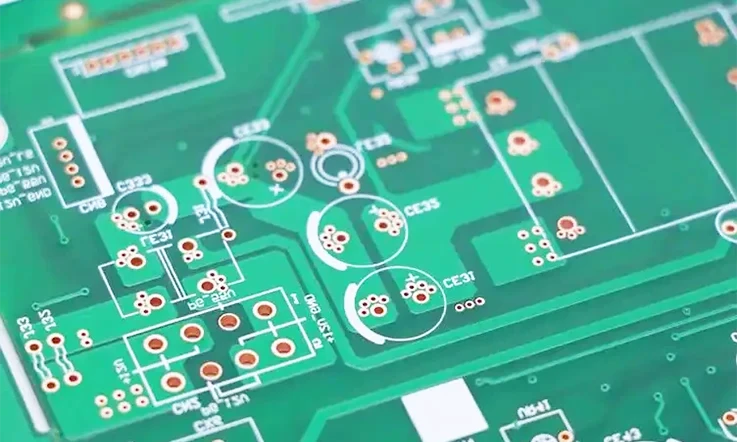
In this section, we will delve into the key advantages of Arlon AD300C, covering its low loss, high dielectric constant, and long-term reliability—features that make it a standout material for high-frequency circuits.
Low Loss and High-Speed Signal Transmission in Arlon AD300C PCBs
In RF and microwave circuit design, keeping signals clear and reducing loss is a must. Arlon AD300C PCB laminates excel in this department, delivering low loss properties that allow signals to move faster and more efficiently. This means less signal degradation, helping the system perform at its best even under demanding conditions.
How Low Loss Contributes to High-Speed Performance-
The loss tangent of Arlon AD300C at 5 GHz is approximately 0.0021, a figure that ensures minimal signal attenuation in high-frequency microwave circuits. By maintaining a low dielectric loss, the laminate reduces signal distortion and ensures that high-speed data can pass through without losing quality.
| Property | Value (at 5 GHz) |
| Loss Tangent | 0.0021 |
| Dielectric Constant | 2.97 |
| Signal Integrity | High |
The low loss tangent ensures that signal performance is optimized even at the highest frequencies, helping to avoid signal degradation and interference. This contributes directly to the overall speed and efficiency of data transmission in applications such as wireless communication.By selecting Arlon AD300C, you’re choosing a material that guarantees high-speed signal transmission with minimal loss—essential for keeping up with the demands of modern telecommunications.
Arlon AD300C’s High Dielectric Constant and Its Role in Impedance Control
In microwave circuit design, consistent impedance is a another factor for ensuring efficient signal flow. Arlon AD300C provides a high dielectric constant that helps achieve accurate impedance matching. This stability enables signals to travel through the circuit smoothly, avoiding issues like interference or loss due to impedance mismatches.
How the Dielectric Constant Influences Impedance Control-
The high dielectric constant of Arlon AD300C allows for more accurate impedance control, ensuring that circuits maintain the expected electrical characteristics across various frequencies. This property is especially beneficial in microwave designs where tight impedance tolerance is required to prevent reflections and signal loss.
| Frequency (GHz) | Dielectric Constant (Arlon AD300C) | Benefit |
| 10 GHz | 2.97 | Ideal for high-frequency designs |
With Arlon AD300C, the dielectric constant remains consistent over a broad frequency range, ensuring signal integrity and preventing the issues caused by impedance mismatch. Therefore, choosing Arlon AD300C guarantees you have a laminate that provides the predictability needed for precise impedance control.
Long-Term Reliability and Stability of Arlon AD300C in Harsh Environments
When designing microwave circuits for industries like aerospace, military, or telecommunications, it’s vital that the materials used remain reliable over time, even under challenging conditions. Arlon AD300C PCB laminates are known for their long-term stability, even in high-temperature and moisture-prone environments.
How Arlon AD300C Withstands Harsh Conditions-
Arlon AD300C offers excellent thermal stability, meaning it can perform reliably at elevated temperatures without degrading over time. Additionally, it demonstrates moisture resistance, helping to maintain its electrical properties even in humid or damp conditions, making it perfect for applications in environments subject to extreme weather changes.
| Property | Arlon AD300C | Competitor Laminates | Benefit |
| Max Operating Temperature | 180°C | 160°C | Performs at higher temperatures without degradation |
| Moisture Absorption | 0.06% | 0.12% | More resistant to moisture uptake, preventing signal disruption |
| Thermal Conductivity | 0.3 W/mK | 0.25 W/mK | Effective heat dissipation for better thermal management |
Arlon AD300C outperforms other laminates in areas like thermal tolerance and moisture absorption, making it ideal for high-reliability applications in extreme environments. By selecting Arlon AD300C, you’re ensuring that your designs will not only perform well initially but also remain stable and functional for the lifespan of the product, even in demanding conditions.
Material Properties of Arlon AD300C
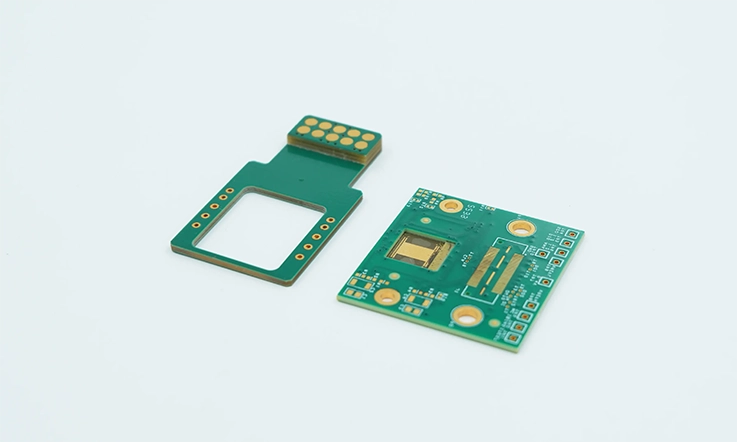
How They Impact PCB Design for High-Frequency Applications?
When designing high-frequency PCBs for RF and microwave systems, the material properties directly impact the performance of the board. The laminate must maintain signal integrity, reduce signal loss, and provide robust thermal stability to meet the stringent demands of advanced electronic applications. These factors ensure the reliability and efficiency of the circuit in high-frequency environments.
Arlon AD300C PCB laminates are crafted to meet these challenges head-on. Let’s take a closer look at the key material properties of Arlon AD300C and how they directly influence high-frequency PCB design. From the dielectric constant to the thermal stability and moisture resistance, Arlon AD300C offers an optimal balance of features that elevate the performance of any RF circuit or microwave system. These properties are not just nice-to-haves—they are necessary to ensure your design performs flawlessly under demanding conditions.
Dielectric Constant and Loss Tangent of Arlon AD300C PCB Laminates
A core factor in high-frequency circuit design is the dielectric constant of the PCB material. For RF and microwave circuits, materials with a high dielectric constant help maintain signal integrity and precise impedance control. Arlon AD300C offers a dielectric constant of 2.97 at 10 GHz, which is ideal for microwave frequencies where stable impedance is necessary to avoid signal reflection and degradation.
The loss tangent, which measures how much energy is lost during signal transmission, is another factor. Arlon AD300C boasts a loss tangent of 0.0020 at 10 GHz, which means that the material exhibits extremely low signal attenuation. In RF applications, this low loss minimizes signal degradation, ensuring that signal clarity is maintained throughout the transmission. This property makes Arlon AD300C particularly suitable for high-speed applications such as 5G communications, satellite systems, and high-speed radar.
To illustrate, let’s compare the dielectric constant and loss tangent of Arlon AD300C with other common materials used in RF PCB manufacturing:
| Material | Dielectric Constant (at 10 GHz) | Loss Tangent (at 10 GHz) |
| Arlon AD300C | 2.97 | 0.0020 |
| FR4 | 4.5 | 0.020 |
| Rogers RO4003C | 3.38 | 0.0027 |
| Taconic TLY-5 | 3.25 | 0.0025 |
Arlon AD300C compares favorably with other high-performance materials in terms of both dielectric constant and loss tangent. This makes it an excellent choice for designs that demand low signal loss and precise impedance control.
Thermal Performance and Moisture Resistance of Arlon AD300C PCBs
When working with high-frequency applications, managing heat effectively is as significant as electrical performance. Excessive heat can cause signal distortion and may even lead to PCB failure if not properly addressed. Fortunately, Arlon AD300C provides excellent thermal stability, making it a solid choice for applications where high operating temperatures are typical, such as automotive electronics, military systems, and high-speed communications.
With a glass transition temperature (Tg) of 180°C, Arlon AD300C is designed to withstand the high thermal stresses typical in these demanding environments. Therefore, Arlon AD300C provides the thermal stability needed to keep your system running without thermal degradation.
In high-frequency PCB design, moisture resistance contributes to the long-term durability and reliability of the board. Arlon AD300C excels with its low moisture absorption rate of just 0.06%. This feature helps prevent moisture from entering the laminate, avoiding problems like delamination, signal degradation, and corrosion.This characteristic is particularly important for multilayer PCBs, where moisture can accumulate between layers and affect the overall structural integrity of the board.
Let’s compare the thermal properties and moisture resistance of Arlon AD300C with a few other materials:
| Material | Glass Transition Temperature (Tg) | Moisture Absorption | Thermal Conductivity (W/m·K) |
| Arlon AD300C | 180°C | 0.06% | 0.75 |
| FR4 | 130°C | 0.12% | 0.30 |
| Rogers RO4003C | 280°C | 0.03% | 0.64 |
| Taconic TLY-5 | 150°C | 0.08% | 0.70 |
Arlon AD300C holds its own in terms of thermal resistance and moisture absorption. The high Tg ensures that your PCB can handle higher temperatures, while the low moisture absorption ensures durability in various environmental conditions.
Advantages of Arlon AD300C for High-Speed Signal Integrity
Maintaining signal integrity is a major concern when working with high-frequency circuits. With RF signals traveling at incredibly fast speeds, any loss of signal quality can cause system malfunction or data loss. This is where Arlon AD300C shines, thanks to its excellent signal propagation characteristics.
By offering a low loss tangent and stable dielectric constant, Arlon AD300C ensures that high-speed signals maintain their integrity without unwanted distortion or attenuation. So when you’re designing high-speed data transmission systems or advanced wireless communication devices, Arlon AD300C minimizes the risk of signal degradation. The material’s low signal loss ensures that high-frequency signals travel across the PCB with minimal interference, providing a reliable transmission path for your system.
In addition, Arlon AD300C’s low dielectric loss helps keep the signal consistent, which is a big deal in microwave circuits where even minor impedance shifts can cause signal reflections or unwanted interference. With Arlon AD300C, your high-speed circuits can enjoy clearer signals and fewer mistakes, which can make a real difference when it comes to the overall performance of the system.
Key Performance Summary for Arlon AD300C:
| Property | Value |
| Loss Tangent at 10 GHz | 0.0020 |
| Dielectric Constant | 2.97 |
| Thermal Stability (Tg) | 180°C |
| Moisture Absorption | 0.06% |
Arlon AD300C vs. Other PCB Laminates for RF and Microwave Circuits
When it comes to high-frequency PCB design, selecting the right material is often the difference between success and failure in achieving optimal performance. For applications like RF communications, microwave systems, and high-speed circuits, materials like Arlon AD300C are engineered to offer low loss, precise impedance control, and high reliability. But how does Arlon AD300C measure up against some of the most widely used PCB laminates from competitors like Rogers, Taconic, and Isola?
In this section, we’ll break down key material properties and highlight where Arlon AD300C excels, ensuring that you can make an informed choice based on your performance needs. Let’s dive in and see how Arlon AD300C compares to other top-tier laminates for RF and microwave circuits.
Arlon AD300C vs. Rogers: Performance in High-Frequency RF Circuit Design
When designing high-frequency RF circuits, signal integrity and low loss are non-negotiable. Arlon AD300C is specifically engineered to minimize signal loss and ensure smooth signal transmission in demanding RF applications. Compared to Rogers materials like RO4003C and RO4350B, Arlon AD300C stands out in several areas, especially in terms of dielectric constant and loss tangent.
●Signal Integrity: Arlon AD300C has a dielectric constant of 2.97 at 10 GHz, while Rogers RO4003C has a slightly higher value of 3.38. A lower dielectric constant helps reduce signal distortion and impedance mismatch, especially at higher frequencies.
●Loss Tangent: The loss tangent of Arlon AD300C is 0.0020 at 10 GHz, which is even lower than Rogers RO4003C, which is 0.0027. This means Arlon AD300C is better at preserving signal fidelity with less attenuation during signal propagation.
Let’s compare their key properties:
| Material | Dielectric Constant (at 10 GHz) | Loss Tangent (at 10 GHz) | Glass Transition Temp. (Tg) | Moisture Absorption |
| Arlon AD300C | 2.97 | 0.0020 | 180°C | 0.06% |
| Rogers RO4003C | 3.38 | 0.0027 | 280°C | 0.03% |
While Rogers RO4003C has the edge in thermal stability (higher Tg), Arlon AD300C excels in low loss and signal transmission, which are the key priorities for many RF applications. So if your priority is low-loss performance and signal integrity, Arlon AD300C might be the better option.
Arlon AD300C vs. Taconic: Which Is Best for Microwave Applications?
Both Arlon AD300C and Taconic materials like TLY-5 are known for their use in microwave applications that require low-loss characteristics. However, when it comes to dielectric constant and loss tangent, Arlon AD300C shows a clear advantage in RF and microwave circuit performance.
●Dielectric Constant: Arlon AD300C has a dielectric constant of 2.97, which is lower than Taconic TLY-5, which comes in at 3.25. The reduced dielectric constant of Arlon AD300C provides us with the flexibility to achieve more accurate impedance matching, making it a solid choice for high-frequency microwave applications. This allows for more predictable performance in complex RF designs, where even small discrepancies can lead to signal issues. Compared to higher dielectric materials, Arlon AD300C delivers smoother and more efficient signal transmission, especially in environments where precision counts.
●Loss Tangent: With a loss tangent of 0.0020, Arlon AD300C outperforms Taconic TLY-5, which has a slightly higher value of 0.0025. This lower loss means that Arlon AD300C will experience less signal attenuation and provide more consistent performance in microwave applications.
Here’s a breakdown of their core properties:
| Material | Dielectric Constant (at 10 GHz) | Loss Tangent (at 10 GHz) | Glass Transition Temp. (Tg) | Moisture Absorption |
| Arlon AD300C | 2.97 | 0.0020 | 180°C | 0.06% |
| Taconic TLY-5 | 3.25 | 0.0025 | 150°C | 0.08% |
When designing microwave circuits, Arlon AD300C stands out with its combination of a low dielectric constant, low loss tangent, and high signal integrity. These attributes make it a solid choice for applications where achieving precise impedance matching is a top priority.
Arlon AD300C vs. Isola: Benefits for High-Speed Signal Transmission
For high-speed signal transmission, materials like Arlon AD300C and Isola laminates are designed to handle the challenges of high-frequency data transmission and low-loss signal integrity.
●Impedance Control: Arlon AD300C has a dielectric constant of 3.0, which ensures excellent impedance matching for high-speed RF applications. In comparison, Isola’s IS680 laminate has a dielectric constant of 3.5, which may slightly affect the precision of impedance control.
●Signal Transmission: Arlon AD300C’s loss tangent of 0.0020 at 10 GHz gives it a clear advantage in maintaining signal clarity with minimal attenuation. In contrast, Isola’s IS680 has a slightly higher loss tangent of 0.0025, which means there could be slightly more signal degradation over long distances or high frequencies.
Let’s compare their key properties:
| Material | Dielectric Constant (at 10 GHz) | Loss Tangent (at 10 GHz) | Glass Transition Temp. (Tg) | Moisture Absorption |
| Arlon AD300C | 2.97 | 0.0020 | 180°C | 0.06% |
| Isola IS680 | 3.5 | 0.0025 | 170°C | 0.08% |
Arlon AD300C offers better signal transmission and low-loss performance compared to Isola IS680, making it the more favorable choice for high-speed signal transmission in RF and microwave applications.
Using Arlon AD300C PCB Laminates in Multilayer PCB Designs?
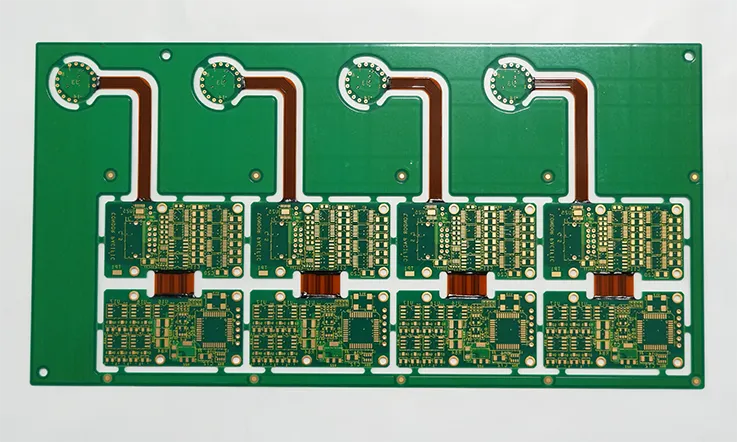
When it comes to designing multilayer PCBs for high-frequency applications, Arlon AD300C has proven itself to be an excellent choice. It combines superior material properties with high performance, ensuring that multilayer designs maintain consistent impedance control, low signal loss, and high reliability across all layers. But what makes Arlon AD300C stand out in multilayer PCB construction, and how can you maximize its potential in your design? Let’s break it down.
Benefits of Arlon AD300C for Multilayer PCB Construction
Arlon AD300C has several standout features that enhance the performance and reliability of multilayer PCBs. One of the big benefits is its ability to maintain consistent impedance control and signal transmission across all layers in the PCB stackup.
●Impedance Control: With a dielectric constant of 2.97 and a low loss tangent of 0.0020 at 10 GHz, Arlon AD300C ensures consistent and stable impedance matching across multiple layers, keeping the integrity of high-frequency signals intact. This combination of properties helps to reduce unwanted reflections and interference, ensuring smoother signal flow, which is a huge plus for maintaining system performance in high-speed and RF applications.
●Thermal Stability: Arlon AD300C delivers impressive thermal stability with a glass transition temperature (Tg) of 180°C, making it well-suited for high-power multilayer designs. With this kind of heat resistance, the material holds up under intense operational conditions, ensuring that signal integrity and mechanical strength are maintained even when the temperature goes up. This means fewer worries about thermal-induced issues like signal distortion or material breakdown, keeping your systems running smoothly even in tough environments.
●Reduced Signal Loss: One of the major advantages of Arlon AD300C is its low loss tangent. This characteristic helps preserve signal integrity by minimizing attenuation over long transmission lines, ensuring clear communication and high-speed data transfer without loss.
| Property | Arlon AD300C | Competitor Material (e.g., Rogers RO4003C) |
| Dielectric Constant (10 GHz) | 2.97 | 3.38 |
| Loss Tangent (10 GHz) | 0.0020 | 0.0027 |
| Glass Transition Temperature (Tg) | 180°C | 280°C |
| Moisture Absorption | 0.06% | 0.05% |
Arlon AD300C offers a strong balance between low signal loss and reliability at high frequencies, ensuring consistent performance across layers in the multilayer structure.
Best Practices for Layer Stackup and Material Selection with Arlon AD300C
When integrating Arlon AD300C into multilayer PCB designs, proper attention to material selection and layer stackup helps in fully utilizing the laminate’s potential. Here’s how you can optimize your layer design:
1.Optimize Stackup for Impedance Control: When designing your multilayer PCB stackup, ensure that Arlon AD300C is used in the signal layers where impedance control is critical. The material’s stable dielectric constant of 2.97 allows for accurate controlled impedance across a wide frequency range.
2.Balance Signal and Ground Planes: To ensure optimal signal integrity, pairing Arlon AD300C with high-quality copper ground and power planes is a smart move. This setup provides the necessary electrical shielding and thermal dissipation needed in high-frequency applications.
3.Avoid Excessive Layer-to-Layer Gaps: For multilayer PCB construction, it’s essential to keep layer-to-layer gaps as small as possible to reduce signal degradation and cross-talk. Using Arlon AD300C’s low moisture absorption rate (0.06%) ensures minimal expansion or contraction of the material over time.
Challenges of Using Arlon AD300C in Multilayer Design and Solutions
While Arlon AD300C provides numerous benefits, there are certain challenges that we may face when incorporating it into multilayer PCB designs. Let’s take a closer look at some of these challenges and their potential solutions.
1.Moisture Absorption-
●Challenge: Moisture absorption can disrupt the material’s electrical properties, leading to signal degradation and compromised performance. Arlon AD300C’s low moisture absorption rate reduces this risk. Nevertheless, it’s still essential to monitor humidity levels, especially in multilayer PCB designs, where moisture can accumulate between layers and affect the overall performance.
●Solution: To mitigate the risk of moisture affecting the design, make sure to use conformal coating or laminate sealants that protect the PCB from moisture. Additionally, pre-baking the material before PCB assembly can remove any residual moisture.
2.Layer-to-Layer Bonding-
●Challenge: Achieving strong layer-to-layer bonding in multilayer designs can be challenging when using Arlon AD300C, as its properties might differ slightly from conventional materials, especially during the lamination process.
●Solution: To achieve strong bonds, ensure that the adhesive materials and lamination process are compatible with Arlon AD300C. Use a low-temperature lamination process to avoid compromising the material’s integrity. Additionally, using a high-temperature flux during the soldering process ensures better adhesion.
3.Cost Considerations-
●Challenge: Arlon AD300C may be more expensive than traditional materials, especially for mass-production applications.
●Solution: While the initial investment in Arlon AD300C might be higher, its long-term durability and stable performance make it well worth the cost, particularly in demanding RF and microwave designs. The material’s ability to maintain signal integrity and reliability over time ensures a solid return, especially in applications where consistent performance is non-negotiable.
| Challenge | Solution |
| Moisture Absorption | Use conformal coating, pre-bake materials |
| Layer-to-Layer Bonding | Optimize lamination temperature, use compatible adhesives |
| Cost Considerations | Leverage long-term performance benefits |
Despite these challenges, the Arlon AD300C material remains a top contender for multilayer PCBs due to its exceptional performance and reliability under demanding conditions.
Which Factors to Consider When Choosing Arlon AD300C for PCB Manufacturing?
When deciding on Arlon AD300C for your PCB project, it’s important to take a few things into account that will influence everything from design to performance and cost. Having a solid understanding of these elements will help ensure you’re on the right track with both the material’s specs and your production process, all while keeping things cost-effective.
The performance of Arlon AD300C hinges on its dielectric properties, thermal stability, and manufacturing compatibility. These factors play an undeniable role in shaping your PCB’s ability to handle high-frequency signals, dissipate heat, and maintain signal integrity across various layers.
Here’s a breakdown of what to keep in mind when opting for Arlon AD300C in your PCB manufacturing process.
Application Requirements – Does Arlon AD300C Meet Your Needs?
Before committing to Arlon AD300C, it’s worth taking a closer look at whether its electrical and mechanical properties align with the specific needs of your application. Arlon AD300C is built for high-frequency RF, microwave, and high-speed digital circuits, where maintaining consistent signal quality, minimizing signal loss, and achieving precise impedance control are fundamental.
If your project requires handling high frequencies or high-speed data transmission while keeping signal degradation to a minimum, Arlon AD300C is a solid choice. It stands out for its ability to deliver consistent performance under demanding conditions, making it a go-to material for designs that demand accuracy and reliability
1.Frequency Range: Arlon AD300C offers excellent performance at high frequencies, maintaining low signal loss and minimal signal distortion. This is especially beneficial for applications that operate in the GHz range, such as 5G systems, telecommunication networks, and radar technology.
2.Power Handling: The material’s thermal stability and low loss tangent enable it to manage higher power levels without significant degradation in performance.
3.Signal Integrity: With a dielectric constant of 2.97 and a loss tangent of 0.0020 at 10 GHz, Arlon AD300C delivers precise impedance control and ensures signal integrity across complex PCB layouts.
Cost-Effectiveness – Balancing Performance and Budget
In any PCB manufacturing decision, the cost-effectiveness of the chosen material is a central consideration. While Arlon AD300C may not be the cheapest option on the market, its long-term performance and reliability make it a worthwhile investment in the right application.
●Material Cost: While Arlon AD300C may come at a premium compared to traditional FR4 materials, it offers superior performance in high-frequency environments, which can ultimately reduce long-term maintenance and repair costs.
●Manufacturing Efficiency: The material’s ease of processing, including drilling, machining, and plating, means it fits well with standard PCB fabrication processes, helping to keep manufacturing costs manageable.
●Longevity: With its ability to withstand thermal cycling and moisture resistance, Arlon AD300C ensures that PCBs built with this material will last longer in harsh environments, reducing the risk of failure and downtime in core systems.
Manufacturing Compatibility – Can You Work with Arlon AD300C?
Before committing to Arlon AD300C, it’s essential to confirm that the material aligns with your existing manufacturing processes. Fortunately, Arlon AD300C is widely recognized for its strong compatibility with standard PCB fabrication methods. Whether you’re drilling, plating, or applying surface finishes, this laminate integrates effortlessly into the standard manufacturing workflow, minimizing the need for adjustments or specialized equipment.
●Drilling and Machining: Arlon AD300C provides outstanding machinability, allowing for easy drilling and shaping without losing its structural strength. This feature is especially useful when working with multilayer PCBs, where maintaining precision and consistency is a must. Additionally, with a moisture absorption rate of only 0.06%, Arlon AD300C ensures that the material’s dimensions remain stable during fabrication. This reduces the risk of dimensional shifts, enhancing the overall accuracy and dependability of the finished product throughout the manufacturing process.
●Plating and Assembly: The material is compatible with traditional copper plating processes and can be used with standard soldering and bonding techniques for final assembly.
●Lamination: When it comes to multilayer PCB designs, Arlon AD300C offers good layer-to-layer bonding, ensuring that high-frequency signals travel with minimal loss between layers.
| Process | Arlon AD300C | Common Alternative Material (e.g., FR4) |
| Drilling | Easy to drill, stable during processing | May experience higher thermal expansion |
| Plating | Compatible with standard copper plating | May have bonding challenges in high-frequency designs |
| Lamination | Excellent bonding, low moisture absorption | Higher moisture absorption leading to instability |
Signal Integrity – How Well Does Arlon AD300C Handle High-Speed Signals?
Signal integrity is at the heart of any high-frequency PCB design, and Arlon AD300C excels in ensuring that your signals are clean, stable, and reliable throughout the entire circuit.
1.Insertion Loss: With a low loss tangent of 0.0020 at 10 GHz, Arlon AD300C reduces insertion loss, meaning less signal attenuation as it travels through the PCB. This makes it an excellent choice for systems that rely on consistent data flow.
2.Return Loss: Arlon AD300C reduces return loss, ensuring minimal signal reflection back to the source. This helps maintain a clean signal throughout the transmission process. In high-speed, high-frequency applications, minimizing return loss contributes to more stable and reliable circuit performance, avoiding unwanted interference that can degrade signal quality.
3.Impedance Control: The dielectric constant of 2.97 ensures consistent impedance across the PCB, even in multi-layer configurations, helping to eliminate issues such as signal crosstalk and reflection that can arise from poor impedance matching.
Environmental Factors – Can Arlon AD300C Handle Your Operating Conditions?
Finally, consider the environmental factors your PCB will be exposed to during its lifecycle. Arlon AD300C has excellent resistance to moisture, thermal cycling, and chemical exposure, making it suitable for harsh conditions.
●Thermal Stability: With a Tg of >180°C, Arlon AD300C is capable of handling high temperatures, which makes it good for aerospace and automotive applications.
●Moisture Resistance: Its low moisture absorption (0.06%) prevents performance degradation due to humidity or wet environments, making it suitable for marine or outdoor equipment.
●Chemical Resistance: Arlon AD300C is resistant to most chemicals, which makes it a strong candidate for use in industrial control systems and military applications.
| Environmental Factor | Arlon AD300C | Competitor Material (e.g., FR4) |
| Moisture Absorption | 0.06% | 0.15% |
| Thermal Stability (Tg) | 180°C | 130°C |
| Chemical Resistance | Excellent | Moderate |
By choosing Arlon AD300C, you’re setting up your PCB to withstand even the harshest environmental conditions.
FAQ & Arlon AD300C PCB laminates
1. What is the maximum operating temperature of Arlon AD300C PCB laminates?
Arlon AD300C can withstand temperatures up to 180°C without compromising performance.
2. Can Arlon AD300C be used for flexible PCBs?
No, Arlon AD300C is specifically designed for rigid PCB applications and is not suitable for flexible circuits.
3. Is Arlon AD300C suitable for high-power RF applications?
Yes, Arlon AD300C performs well in high-power RF applications, maintaining low loss and excellent signal integrity.
4. What are the processing considerations for Arlon AD300C during PCB manufacturing?
Arlon AD300C requires precise control during manufacturing, including drilling, plating, and laminating, to preserve its high-frequency performance.
5. Is Arlon AD300C available in different thicknesses for various designs?
Yes, Arlon AD300C comes in a range of thicknesses to accommodate different design specifications and performance needs.
Why Choose Us as Your PCB Supplier?
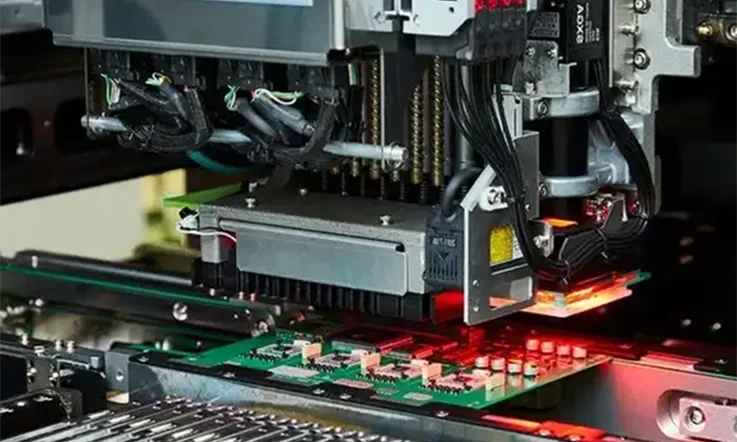
When it comes to high-quality PCB solutions, our extensive expertise and dedication to customer satisfaction make us the right choice for your project. We don’t just provide standard solutions; we specialize in high-end, custom PCB manufacturing and assembly, working with top-tier materials and offering comprehensive support at every stage of production. Here’s why partnering with us will give you the edge in your PCB requirements.
We Offer a Wide Range of Premium Brand PCB Manufacturing and Assembly Services
At the heart of our offerings is our commitment to delivering high-performance, reliable PCBs. We work closely with some of the most reputable and trusted brands in the industry, ensuring that every project we take on benefits from cutting-edge technology and top-tier materials. From Arlon to Rogers, Isola, Taconic and etc, we guarantee the best materials that suit your specific application—such as it’s for RF circuits, microwave applications, telecommunications, aerospace, or automotive industries.
Premium Brand PCB Materials We Work With-
We partner with leading material brands to provide our clients with the best possible performance, reliability, and thermal management. Here’s a overview of some of the materials we use and their top benefits:
| Material Brand | Key Properties | Applications | Performance Highlights |
| Arlon AD300C | Low Loss Tangent, High Dielectric Constant | RF, Microwave, Aerospace | Superior signal integrity |
| Rogers RO4000 | Low Dielectric Loss, High Temp Resistance | 5G, Automotive | Excellent thermal stability |
| Isola I-Tera | High Reliability, Low Loss Tangent | Military, Medical | Enhanced durability |
| Taconic TLY | Low Moisture Absorption, Low Loss | Aerospace, Telecom | Superior impedance control |
Comprehensive PCB Assembly Services-
Our PCB assembly services extend far beyond just manufacturing. We specialize in both Surface-Mount Technology (SMT) and Through-Hole Technology (THT), ensuring a precise, high-quality assembly process. From rapid prototyping to full-turnkey PCB assembly and functional testing, we cover it all. Our process is optimized for signal integrity, efficient thermal management, and long-lasting performance.
●Prototyping: Fast-turnaround prototypes for validation.
●Component Sourcing: We work with trusted component suppliers to ensure you get the best quality.
●Assembly: We provide complete assembly solutions, including component placement, soldering, and post-assembly inspection.
●Functional Testing: Rigorous testing ensures your PCBs meet performance standards.
Custom Solutions for Complex Designs-
We specialize in custom PCB solutions for even the most complex and specialized designs. Whether your project calls for multilayer boards, advanced thermal management, or complex impedance control, we collaborate with you to develop the right solution. Our focus on signal integrity, reliability, and thermal stability ensures that every PCB is built to exceed your expectations.
So:
By choosing us as your PCB supplier, you benefit from not only top-tier materials and state-of-the-art assembly capabilities but also from a dedicated team of professionals that understands your unique needs. Whether you require the highest performance for RF/microwave circuits, durability in harsh environments, or cost-effective solutions for complex designs, we deliver.
Don’t just settle for any PCB supplier—partner with us and ensure your project is built to the highest standards. We’re ready to provide you with the exact PCB solution you need.
Our services
Arlon PCB Laminate & Materials Series

